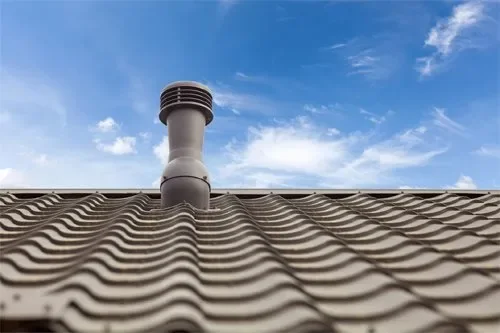Plastic pipes on the roof are a common sight in modern buildings, serving various purposes related to drainage, ventilation, and plumbing systems. These pipes, typically made from materials such as PVC (polyvinyl chloride) or ABS (acrylonitrile butadiene styrene), play a vital role in maintaining the integrity and functionality of roofing systems. In this article, we’ll explore the uses, benefits, and considerations of plastic pipes on the roof, shedding light on their importance in building construction and maintenance.
Uses of Plastic Pipes on the Roof:

- Drainage: One of the primary uses of plastic pipes on the roof is for drainage systems. These pipes collect rainwater or melted snow from the roof surface and channel it away from the building to prevent water damage and flooding. Roof drains, scuppers, and downspouts are standard plastic pipes used for roof drainage.
- Ventilation: Plastic pipes on the roof may also be used for ventilation systems, allowing air to circulate and prevent moisture buildup in attic spaces or roof cavities. Vent pipes, ridge vents, and soffit vents are ventilation pipes commonly installed on roofs to maintain proper airflow and temperature regulation.
- Plumbing: In some cases, plastic pipes on the roof are part of the building’s plumbing system, carrying wastewater or sewage from plumbing fixtures such as toilets, sinks, or showers to the main sewer or septic system. Vent pipes are also used in plumbing systems to equalise pressure and prevent sewer gas buildup in the plumbing system.
- Solar Panel Installation: Plastic pipes may be used to install solar panels on the roof, serving as conduits for wiring or piping associated with solar energy systems. These pipes provide a protected route for electrical cables, plumbing lines, or other components required for solar panel installation and operation.
Benefits of Plastic Pipes on the Roof:
- Durability: Plastic pipes are resistant to corrosion, rust, and degradation, making them durable and long-lasting outdoors. They can withstand exposure to sunlight, rain, snow, and temperature fluctuations without deteriorating or weakening over time.
- Lightweight: Plastic pipes are lightweight and easier to handle, transport, and install than metal or concrete pipes. Their lightweight nature reduces labour and installation costs and makes them suitable for rooftop applications where weight restrictions or structural considerations may apply.
- Flexibility: Plastic pipes are inherently flexible and can be easily bent, shaped, or cut to accommodate various roof configurations and installation requirements. Their flexibility allows for easier customisation and adaptation to specific project needs, reducing the need for complex fittings or joints.
- Cost-Effectiveness: Plastic pipes are often more cost-effective than alternative materials such as metal or clay pipes, making them a budget-friendly option for roof drainage, ventilation, and plumbing systems. Their lower material costs, reduced installation time, and minimal maintenance requirements contribute to overall cost savings for building owners and contractors.
- Resistance to Chemicals: Plastic pipes resist chemicals, acids, and alkalis commonly found in rainwater, wastewater, or plumbing systems. This resistance minimises the risk of corrosion or deterioration due to chemical exposure, ensuring reliable performance and longevity in harsh environments.
Considerations for Plastic Pipes on the Roof:
- UV Exposure: Although plastic pipes resist UV radiation, prolonged exposure to sunlight may cause them to degrade over time, leading to discolouration, brittleness, or reduced structural integrity. Proper insulation, protective coatings, or shading can help minimise UV exposure and extend the lifespan of plastic pipes on the roof.
- Temperature Variations: Plastic pipes may expand or contract in response to temperature fluctuations, particularly in regions with extremely hot or cold climates. Proper installation techniques, expansion joints, or thermal insulation can help accommodate thermal movement and prevent damage or leaks in plastic pipes on the roof.
- Installation and Maintenance: Proper installation and maintenance are essential for ensuring the optimal performance and longevity of plastic pipes on the roof. Qualified contractors should follow manufacturer guidelines and best practices when installing plastic pipes, including proper support, alignment, and sealing techniques. Regular inspections and maintenance checks can help promptly identify and address any issues or damage.
- Code Compliance: Building codes, regulations, and standards may dictate specific requirements for installing plastic pipes on the roof, including size, material specifications, and installation methods. Property owners and contractors should ensure that plastic pipes meet relevant code requirements and obtain necessary permits or approvals before installation.




